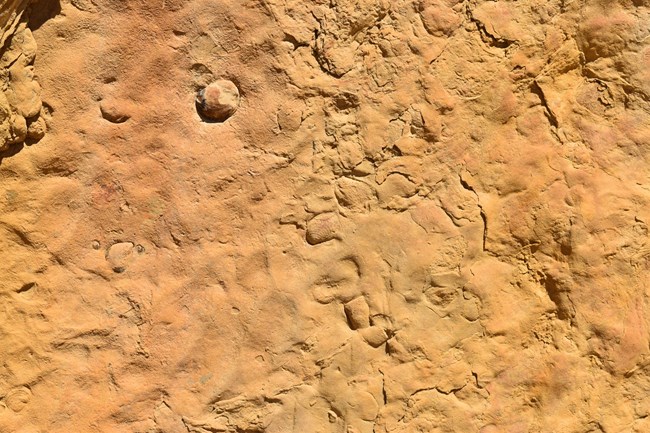Part of a series of articles titled Chaco Collections—Paleontology.
Previous: Inoceramus shells
Next: Ancient Ripple Marks
Article

NPS photo.

NPS photo.
Geological features and fossils tell the story of an ancient ecosystem. This boulder is a unique example of both. The size and shape of the ripples leave clues about the force and direction of the current, and the shell molds provide examples of who lived in this environment. Located in Chaco Culture National Historical Park, these features were exposed when a massive boulder known as Threatening Rock collapsed on Pueblo Bonito on January 22, 1941.
Chaco Culture—Ripple Marks and Bivalve Fossils


Left image
Ripple mark model with true color overlay.
Credit: NPS image by Jack Wood.
Right image
Ripple mark model with color ramp overlay.
Credit: NPS image by Jack Wood.
Footnotes (labeled on model)
Part of a series of articles titled Chaco Collections—Paleontology.
Previous: Inoceramus shells
Next: Ancient Ripple Marks
Last updated: April 30, 2021